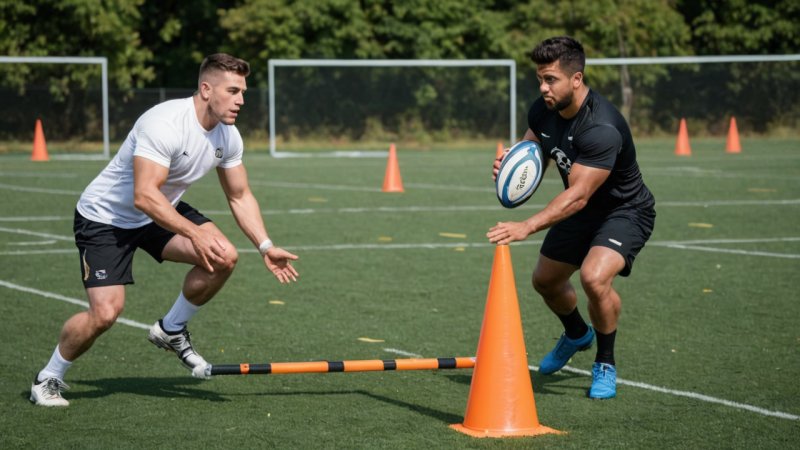Agility is a crucial component of athletic performance in many sports, particularly in football and rugby. Both sports require players to change direction quickly, adjust speed, and respond to dynamic game situations. However, the specific demands and contexts in which agility is applied can differ significantly between football and rugby. This article will explore the similarities and differences in agility training between these two sports, highlighting the pros and cons of each approach, and how they contribute to overall athletic performance.
Understanding Agility in Sports
Agility refers to the ability to move quickly and easily, often in response to external stimuli. It involves a combination of balance, coordination, speed, and strength. In both football and rugby, agility plays a key role in executing plays, avoiding tackles, and creating scoring opportunities.
Agility Training Techniques
Football Agility Training
Football agility training typically focuses on quick lateral movements, acceleration, and deceleration. Common drills include:
- Ladder Drills: These improve foot speed and coordination.
- Cone Drills: Players navigate through cones to enhance lateral movement and change of direction.
- Shuttle Runs: These help develop speed and quickness in short bursts.
Rugby Agility Training
In rugby, agility training incorporates the need for both offensive and defensive maneuvers. Key drills include:
- Agility Ladder Drills: Similar to football, but often with an emphasis on incorporating ball handling.
- Tag Drills: Players practice evading opponents while maintaining ball control.
- Scrum and Ruck Simulation: These drills require agility within a physical context, enhancing both speed and strength.
Pros and Cons of Each Approach
Football Agility Training Pros
Football agility training is designed with a clear focus on specific movements required in the game. This specificity can lead to:
- Increased Speed: Tailored drills can enhance a player’s straight-line and lateral speed.
- Improved Reaction Time: Training often incorporates game scenarios, improving athletes' ability to react under pressure.
- Enhanced Coordination: Football-specific drills promote better overall body control.
Football Agility Training Cons
However, there are also limitations:
- Narrow Focus: The drills may not translate to all game situations, particularly in unpredictable environments.
- Injury Risk: Emphasis on speed without strength training can lead to muscle strains.
Rugby Agility Training Pros
Rugby agility training addresses the unique demands of the sport, offering several advantages:
- Dynamic Movement: Training often mimics real-game scenarios, improving adaptability.
- Physicality Integration: Includes strength training and contact drills, reducing injury risk.
- Team Coordination: Many drills promote teamwork and communication on the field.
Rugby Agility Training Cons
Despite its benefits, rugby agility training also has drawbacks:
- Complexity: The varied drills may confuse players without a strong foundational understanding.
- Time-Consuming: Incorporating strength and agility training can extend practice time, which may not always be feasible.
Differences in Application
While both football and rugby agility training share common elements, their application diverges significantly:
Field Size and Play Style
Football fields are typically larger, with more space to navigate. This requires a focus on explosive speed and lateral movement. Rugby, however, involves more continuous play in a confined space, necessitating greater adaptability and sustained agility.
Game Dynamics
Football is often more structured, with set plays and formations, allowing for specific agility drills to be practiced repetitively. Rugby's fluid play requires constant adjustment, making agility training more unpredictable and varied.
Conclusion
In conclusion, both football and rugby agility training play vital roles in enhancing athletic performance. Football agility training focuses on speed and lateral movement, while rugby training incorporates dynamic physicality and adaptability. The choice of training approach depends on the specific demands of the sport and the individual athlete's needs. By understanding the unique aspects of agility training in both sports, athletes can tailor their training regimens to improve performance while prioritizing safety and injury prevention.






